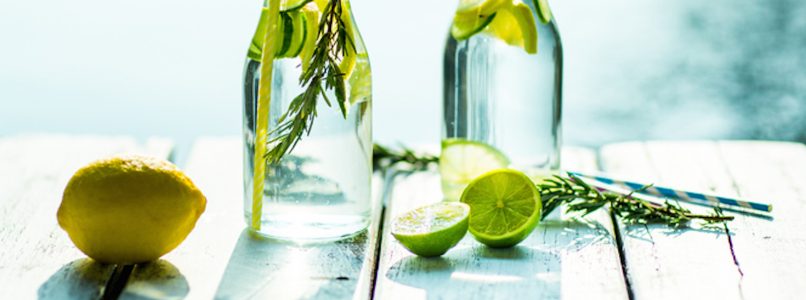You can combine them with cheeses and cured meats, they are healthy, they won't give you bad breath and are cooler than Nordic fermentations. And buy them online
Pickles never had anything cool, but called pickles thanks to Nordic cuisine they have invaded the kitchens of restaurants all over the world. Then it was the turn of the kimchi (but how much garlic!) And a timid return of the local gardener. The prediction is that the next big thing will be the tsukemono. They are fermented and are Japanese, a perfect combination to nominate them for trendy food.
Call them Japanese pickles
Defining them as pickles sounds a bit simplistic. In common with pickles or vegetables preserved in brine from Northern Europe or Northern Italy they have the origin, that is, the need to preserve food for a long time, even without the presence of the refrigerator. However, compared to our gherkins, they are very sophisticated in terms of ingredients and type of fermentation, which go beyond just the use of vinegar or salt.
They are used as an appetizer alongside a beer, as a topping for a bowl of rice, to top off a dish with a hint of sour / salty / spicy and added texture. There are those prepared in salt, with rice vinegar which makes them sweeter and better maintains the color of the wine vinegar, and those made with nukadoko, that is toasted rice bran, kombu seaweed and salt; and pickles made with the waste from the processing of sake, salt and sugar. The most popular that we will all have tasted at least once is the gari, slices of ginger preserved in a brine of salt, rice vinegar and sugar with which you clean your mouth between one sushi and another. Umeboshi, sour salted plums that accompany rice are also very popular. But daikon, aubergines, bamboo shoots are preserved and there is even a typical “Giardiniera” made in Kyoto made with 31 vegetables.
In search of perfect balance
If the reason for its creation is due to necessity, the breadth of preparations can be inscribed in the philosophy of traditional kaiseki cuisine which includes a great variety and balance of foods, colors, textures, cooking methods and flavors in a perfect mix of aesthetics and nutritional healthiness. "Tsukemono, thanks to the clear colors and flavors, are essential to create this harmony also made of contrasts and are an essential ingredient in Japanese food culture: they appear in the meals of the imperial house, in the tea ceremony, alongside the daily rice bowls and also in the vegetarian meal of the monks. In addition to the conservation needs and benefits on the body ". Francesca Scotti explains it in her own book The Sushi Game, published for Terre di Mezzo and with illustrations by Alessandro Mininno.
A bit of history to be knowledgeable
«The tsukemono, whose name derives from tsuke," soaked ", and mono," things ", appear for the first time in writings of the years 729-749 AD. which refer to canned pumpkin and sprouts. During the Heian period (794-1185) the tsukemono culture began to foresee further variations from simple salted vegetables. During the Edo period (1603-1868), pickles in brine and fermented rice bran were invented. Production techniques from the Edo period were further developed in the modern era. There are faster recipes that only take a few hours, others for which you have to master the most advanced fermentation techniques. They are homemade, you can find them in the markets or on the shelves of supermarkets for a few euros, or in hyper-refined versions and from true gourmets ".
Try them like this, in the western way
Eating and discovering new culinary traditions is a game, and this is how this book was born, leading to the discovery of the most typical – or unusual – Japanese dishes. Ten levels of difficulty like in a video game, from tonkatsu (pork cutlet) to funazushi, fermented and really stinking lake fish. Because if we claim to love Japanese cuisine just for eating sushi or ramen, we are wrong. Tsukemono are a real essential ingredient, yet many will have discovered its existence by reading this article. It doesn't matter, but now we can buy them and serve them at home, to seek refreshment at the umpteenth dinner in front of the TV. Without trying to badly imitate other people's recipes and dishes, they are fine (by experience) even with seasonal cheeses, if they have sugar among the ingredients, with roast pork or cold turkey, roast beef, poor boiled potatoes or fatty fish such as mackerel.

Gourmet Japan, online
It is a new online project that welcomes small producers who wish to have their own virtual showcase in Italy. Each is told and described through history, territory and production processes; everyone puts their products on sale in the new store, many of which have never crossed the borders from Japan. Most are ingredients of Japanese cuisine, little known in Europe and Italy, just like tsukemono. There is a great variety of them, both in ingredients and in fermentation method or salt content and they are often different from region to region. The main peculiarities are the better preservation of the ingredients and the increase of human. Characteristic are the salt cherry blossoms, husbands bamboo shoots in sansho pepper soy sauce and marinated burdock in soy sauce (Asa Gobou). With tips on how to combine and serve them, they are all for sale online at www.gourmetgapan.com.




















